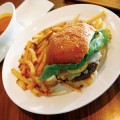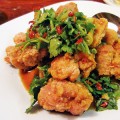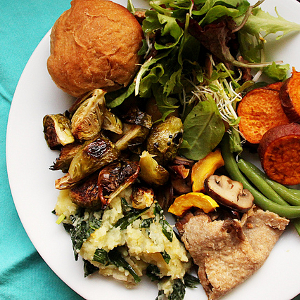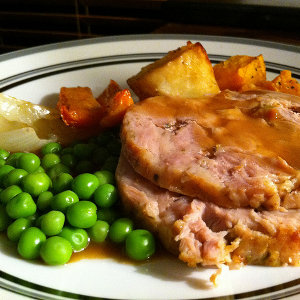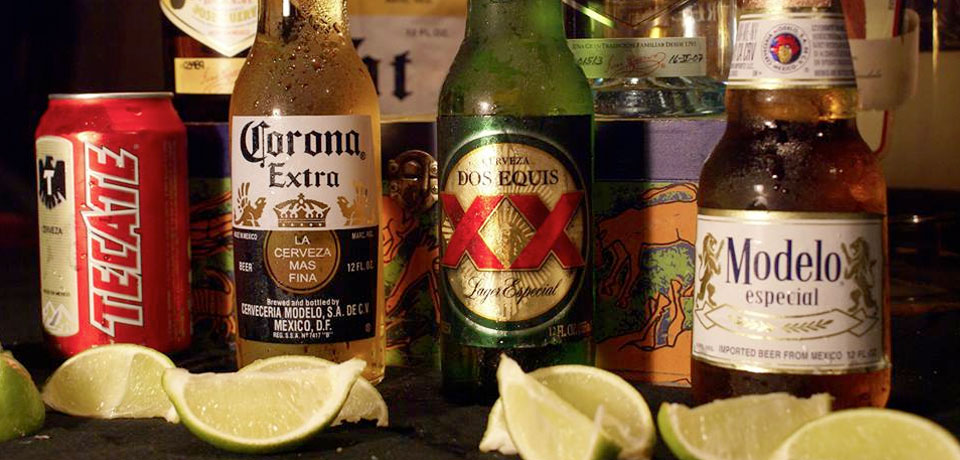Brussels sprouts with bacon is hardly a new idea, but the combination has taken off lately. The pair has become a menu meme, a darling of online recipe searches and food TV.
Given the recent spike in all things bacon, I suppose this was inevitable. But the pairing has gotten popular enough to necessitate a reminder that it’s possible to eat Brussels sprouts without bacon as well. Those green brassica balls go effortlessly and deliciously, for example, in that most vegetarian of dishes: the leafy salad.
However one likes to prepare sprouts, the fundamentals remain the same. And the foundation of most successful Brussels sprout dishes is that the sprouts are cut in half.
Cutting Brussels sprouts in half multiplies the ratio of surface area to volume, which is key when it comes to holding sauce. The many layers of tightly wrapped leaves exposed by a halved Brussels sprout can hold a surprising amount of flavoring. This is crucial, because Brussels sprouts have a strong flavor of their own, and the more sauce you can balance against it the better.
If the sprout is not sliced at least once, the ratio of surface area to volume is not at all conducive to holding sauce. Additionally, the tightly wrapped leaves form an almost impermeable barrier that repels sauce or dressing like water off a freshly waxed car. The sauce has no access to the sphere’s inner folds and can only wait helplessly on the sidelines while a flavor foul is committed in your mouth.
Raw Brussels sprouts are too strong for most palates, so they generally need to be cooked before being tossed in a greasy pan or a salad bowl. My two favorite ways of cooking Brussels sprouts are roasting and steaming.
Roasting gives them a weathered taste and feel. The dry heat cultivates extra flavor as the outer leaves develop a brown crisp.
Steaming sprouts preserves a certain clean, bright innocence in them, the better to deflower with bacon grease, ranch dressing, or a light mix of olive oil, salt and vinegar.
Growing Brussels sprouts is a grind. They take a long time to mature and don’t produce much poundage per plant. That’s why they’re expensive and why each sprout should be groomed like the treasure it is.
Trim the cut end at the bottom of each sprout to create a new, nonbrowned end and pull off the outer leaf or two if they’re brown, yellow, dirty, shriveled or otherwise tainted. What remains are densely packed layers of green and pre-green yellow.
In the oven, I roast my cut sprouts at 350, sprinkled with olive oil and tossed with carrot coins or slices of winter squash. Stir often and cook for about half an hour, or until the first signs of browning.
Steamed, they only need 5 to 10 minutes, depending on the sprouts’ thickness, until they soften all the way through but retain the rich green glow of spring grass.
If you plan to fry Brussels sprouts in bacon grease, a quick steaming is way less trouble. For salad, the rough, rich flavors of roasted Brussels sprouts add bold contrast to the leafy greens.
If cooking Brussels sprouts with other vegetables, just make sure everything is cut to a size that allows it to cook at the same rate as the Brussels sprouts. Both carrots and squash cut to Brussels sprout size will take about the same time or a few minutes longer.
To accompany Brussels sprouts in a salad, I go for sturdy greens like romaine lettuce or endive, and a dressing of equal parts olive oil, cider vinegar and soy sauce. Some or all of the cider vinegar can be replaced by balsamic.
One snazzy way to liven up a winter salad is with seasonal fruit. Even if you don’t live anywhere near the citrus orchards of Florida, Arizona or California, you can eat seasonally, if not locally, in winter. Chunks of orange or grapefruit add nice acidic sweetness to a Brussels sprouts salad, as do pomegranate seeds.
And about that bacon vinaigrette. Any salad can be made omnivore-friendly by preparing the Brussels sprouts with bacon prior to adding them to the salad.
Start by chopping the bacon and putting it in a pan, perhaps with a little olive oil if the bacon isn’t super-fatty. While it’s cooking you can also add other red meats like beef or venison and let it all brown together.
When the bacon is crispy to your liking, add some minced or mashed garlic and stir it in really well. As soon as you smell the garlic, which should be just about immediately, add the pre-cooked sprouts, along with any other veggies you may have cooked them with.
Stir quickly and deglaze with a shot of bourbon if you have it, and turn off the heat—all within about a minute of when you first added the garlic.
That bourbon shot is a secret trick, by the way. From hunting camp. Share it wisely.
Season with black pepper and hot sauce, and add the above dressing of vinegar, soy sauce and olive oil. Toss the sprouts to maximize their uptake of dressing. Add the meaty, greasy sprouts to your salad, or pop them straight in your mouth.
After hanging on their stalks like bare knuckles in farm fields through late autumn, Brussels sprouts can be stored all through the winter under proper conditions, waiting to offer a refreshing bolt of green when you need it most.
If more people knew how to cook these tight wads of bitter leaves, maybe Brussels sprouts wouldn’t be such a symbol of vegetable-hating. And remember, with Brussels sprouts, good cooking starts with slicing and sauce.
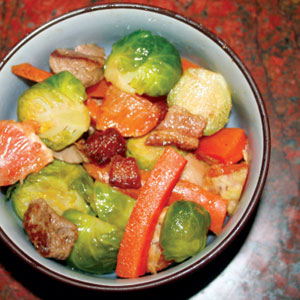
 Best Restaurants Near the Convention Center
Best Restaurants Near the Convention Center  Rachel Maddow to Accept Award at San Jose State
Rachel Maddow to Accept Award at San Jose State 